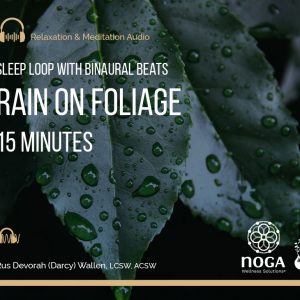Sound Healing with a “Rocky Mountain High?”
 Before the holidays, I wrote a post about sound healing. My blog typically releases new content on Sundays, but since the holidays coincided with Sundays, there was a brief hiatus. Let’s pick up from where I left off. In my previous article HERE, I discussed the potency of humming and sympathetic vibration, as well as discovering your own sound healing techniques. You can find more on this topic HERE.
Before the holidays, I wrote a post about sound healing. My blog typically releases new content on Sundays, but since the holidays coincided with Sundays, there was a brief hiatus. Let’s pick up from where I left off. In my previous article HERE, I discussed the potency of humming and sympathetic vibration, as well as discovering your own sound healing techniques. You can find more on this topic HERE.
In this latest installment, I wish to underscore the profound benefits of sound in relaxing and soothing the nervous system. This is particularly pertinent given the challenging socio-political events occurring worldwide. The 21st-century surge in digital communication, inundating us with a constant stream of information and news through our auditory and visual senses, has triggered a collective response within our nervous systems. In contrast, in the pre-digital era, we enjoyed a more tranquil existence. Additionally, sound pollution has had a detrimental impact on us all. Our indoor lives, characterized by artificial lighting and enclosed spaces devoid of natural light, deprive us not only of the essential vitamin D from sunlight but also the myriad benefits that natural light and sound provide. Technological advancements have ushered in toxic sound environments, including subtle, persistent noises emanating from lighting, computer equipment, appliances, and more. These infiltrate our auditory sphere and are considered detrimental noise. Venturing outdoors into the natural world offers respite, as we reconnect with the soothing sounds of nature—birds, rustling leaves, the wind, and the rhythmic lapping of water on the shore, or raindrops. Tuning into the natural environment rejuvenates our nervous system. According to research, listening to nature sounds, whether recorded or experienced in person, can greatly enhance overall wellbeing. It can soothe the nervous system, enhance sleep and offer a plethora of additional benefits.
The Smithsonian Magazine featured an article and audio (below) regarding this phenomenon.
“Listening to Nature Gives You a Real Rocky Mountain High” discusses the research of conservation biologist Rachel Buxton. Her study concludes that listening to nature sounds, such as birdsongs and flowing water, can:
1. Induce relaxation.
2. Improve one’s mood and cognitive performance.
3. Lower blood pressure and heart rate.
4. Alleviate stress.
5. Lead to feelings of tranquility and more.
The full research article is HERE.
Our own NOGA® Sleep Solutions™ incorporate nature sounds along with binaural beat tracks designed to help you fall asleep quickly. Embedded within each 15- or 30-minute recording is a track that gently guides your brainwaves from the wakeful beta state to progressively more relaxed states—first to alpha, then theta, and finally delta for deep sleep.
I invite you to try my sleep track, “Rain on Foliage,” for free throughout October and November. It features a natural background soundtrack of rain dropping on foliage combined with binaural beats to enhance your sleep experience.
Here is Smithsonian Magazine’s audio: “Birds Singing at Dawn in Rocky Mountain National Park”
We love hearing from you, please feel free to leave your comments below.
With Gratitude,
Rus Devorah


